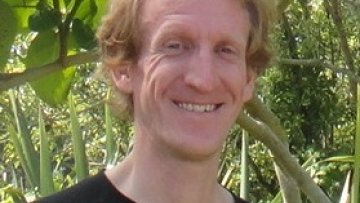The Institute of Physics and Engineering in Medicine has announced the winners of the Martin Black Prize for 2019, which is awarded for the best paper published in Physiological Measurement.
Three Oxford Mathematicians have been awarded 2019 London Mathematical Society (LMS) Prizes.
Andrew Wiles has been awarded a De Morgan Medal for his seminal contributions to number theory and for his resolution of ‘Fermat’s Last Theorem’ in particular, as well as for his numerous activities promoting mathematics in general.
The pure cohomology of multiplicative quiver varieties
Multiplicative quiver varieties are a variant of Nakajima's "additive" quiver varieties which were introduced by Crawley-Boevey and Shaw.
They arise naturally in the study of various moduli spaces, in particular in Boalch's work on irregular connections. In this talk we will discuss joint work with Tom Nevins which shows that the tautological classes for these varieties generate the largest possible subalgebra of the cohomology ring, namely the pure part.
Whether you are interested in Maths at Oxford. Whether you are interested in Maths. Whether you are just interested. The Oxford Mathematics Open Day is LIVE on July 3 @10am. You can watch it all, or just dip in and out. You can also ask questions in our live chat at 10.30am. Virtually come along. You are very welcome.
www.facebook.com/OxfordMathematics
or
14:15
The Hitchin connection in (almost) arbitrary characteristic.
The Hitchin connection is a flat projective connection on bundles of non-abelian theta-functions over the moduli space of curves, originally introduced by Hitchin in a Kahler context. We will describe a purely algebra-geometric construction of this connection that also works in (most)positive characteristics. A key ingredient is an alternative to the Narasimhan-Atiyah-Bott Kahler form on the moduli space of bundles on a curve. We will comment on the connection with some related topics, such as the Grothendieck-Katz p-curvature conjecture. This is joint work with Baier, Bolognesi and Pauly.
Local stability of Einstein metrics under the Ricci iteration
A Ricci iteration is a sequence of Riemannian metrics on a manifold such that every metric in the sequence is equal to the Ricci curvature of the next metric. These sequences of metrics were introduced by Rubinstein to provide a discretisation of the Ricci flow. In this talk, I will discuss the relationship between the Ricci iteration and the Ricci flow. I will also describe a recent result concerning the existence and convergence of Ricci iterations close to certain Einstein metrics. (Joint work with Max Hallgren)
ENIUS TRAINING SCHOOL, BERN | 15 BURSARIES AVAILABLE | APPLICATIONS NOW OPEN
The Training School will bring together a multi-disciplinary group of clinicians, biomedical engineers, biologists and physical scientists to present recent advances in mathematical, computational, in-vitro, and in-vivo approaches to further our understanding of fluid mechanics within the stented ureter and to identify current challenges in urinary stent design. Moreover, leading speakers from the world of industry and regulatory affairs will share their experiences of commercialisation in the medtech industry, and how they have addressed industrial and regulatory challenges when taking their “next-generation” products from bench-to-bedside.
Here is a preliminary program.
We would like to encourage Early Career Researchers (Master students, PhD students, and PostDocs) to apply as trainees, by sending their CV and a short statement (of no more than 250 words) to francesco.clavica@artorg.unibe.ch, explaining why they would like to attend the Training School. Participants are encouraged to present a poster about their work, and should send a title of their poster together with their application.
We will award 15 grants to fund accommodation, travel, and subsistence of trainees.
Applications should be submitted by July 15th, and applicants will be notified by the end of July about the outcome of their application.
Have you ever picked up a glass to find that the coaster it was resting on remains stuck to the bottom? If so, then you have experienced the ability of fluid to stick two surfaces together. When the bottom of the glass is wetted, for example by accidentally spilling a drink, then this fluid can fill the gap between the glass and coaster. The surface tension of the liquid then provides a pulling force on the coaster that keeps it attached to the glass.






